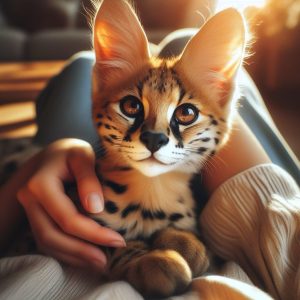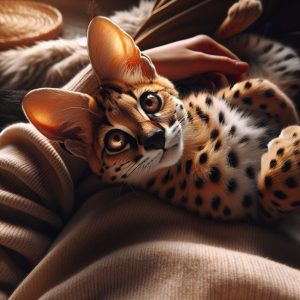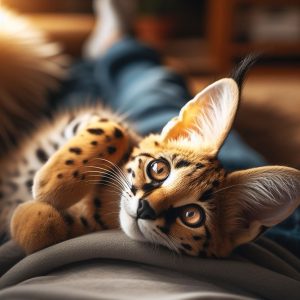Introduction: Serval cats, with their distinctive appearance and graceful demeanor, are among the most captivating inhabitants of the African savannah. However, despite their charismatic presence, serval cats face significant threats from human activities, including hunting. In this article, we delve into the complex reasons behind why serval cats are hunted and the implications of this practice on their populations and ecosystems.
1. Fur Trade: One of the primary reasons for the hunting of serval cats is the demand for their distinctive fur, which is prized for its beauty and used in traditional attire and ceremonial garb. In some regions, serval pelts are highly sought after for use in clothing, accessories, and decorative items, leading to targeted hunting and trapping of these animals for their valuable fur.
2. Traditional Beliefs and Superstitions: In certain cultures, serval cats are revered or feared for their mystical qualities, leading to their persecution for perceived spiritual or medicinal purposes. Some traditional beliefs ascribe magical properties to serval body parts, such as their bones, claws, or whiskers, which are believed to possess protective or healing powers. As a result, serval cats may be targeted by individuals seeking to harvest these body parts for use in traditional rituals or remedies.
3. Livestock Predation: In areas where serval cats coexist with human communities and domesticated livestock, conflicts may arise due to predation on livestock such as chickens, ducks, or small goats. Farmers may retaliate against serval cats perceived as threats to their livelihoods by hunting or trapping them in an effort to protect their livestock and mitigate financial losses.
4. Trophy Hunting: Serval cats may also be targeted by trophy hunters seeking to add these magnificent felines to their collection of hunting trophies. While trophy hunting of serval cats is less common than for larger big cat species, such as lions or leopards, it still poses a threat to serval populations, particularly in regions where regulations governing hunting practices are lax or poorly enforced.
5. Habitat Destruction and Fragmentation: In addition to direct hunting pressure, serval cats face indirect threats from habitat destruction and fragmentation, driven by factors such as agricultural expansion, urbanization, and infrastructure development. Loss of suitable habitat reduces prey availability and increases competition for resources, placing additional pressure on serval populations and exacerbating the impacts of hunting.
6. Conservation Efforts: Despite the challenges they face, serval cats benefit from conservation efforts aimed at protecting their habitats and mitigating threats to their survival. Conservation organizations work to establish protected areas, implement community-based conservation initiatives, and raise awareness about the importance of coexisting with wildlife. By addressing the root causes of serval cat hunting and promoting sustainable coexistence between humans and wildlife, these efforts strive to ensure the long-term survival of these magnificent felines.
Conclusion: In conclusion, serval cats are hunted for a variety of reasons, including the fur trade, traditional beliefs, livestock predation, and trophy hunting. These threats, compounded by habitat destruction and fragmentation, pose significant challenges to the survival of serval populations in the wild. By understanding the complex interplay of factors driving serval cat hunting and implementing targeted conservation strategies, we can work to safeguard these charismatic felines and preserve the biodiversity of their native habitats for future generations.


